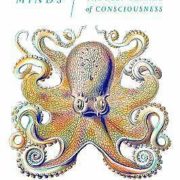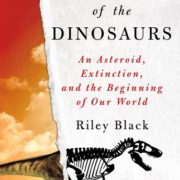DK’s Big Ideas Simply Explained Series
It’s likely that, at one time or another, you’ve perused a guide by DK, the British-based publisher of illustrated reference books in 60+ languages. This multinational publisher has numerous series that cover a seemingly endless list of topics, such as arts and culture, health and beauty, language learning, religions and ideas, transportation, and much more. Regardless of which series or topic, their books tend to be thorough (some would say dense), visual (some would say overstimulating), and full (some would say jam-packed). Generally, there’s a lot happening – text, charts, timelines, images/photos, quotes, illustrations, micro-bios, etc. – at once on any given page. In my experience, people either adore or abhor them, with little opinion in between. Me? I adore them!
My most recent DK adventure took me through three titles from their Big Ideas Simply Explained series: The Art Book, The Economics Book, and The Philosophy Book. Rather than discuss each book individually, I’ll treat them collectively. I might mention, too, that these are but three of 20+ topics covered in this series. Others include astronomy, business, history, literature, movies, politics, science, and more. Two people are covered so in-depth that entire volumes are dedicated to them—Shakespeare and Sherlock Holmes.
Each of the three that I reviewed are around 350 pages, with similar layouts: a 3-4 page table of contents (which is itself illustrated); a 4-6 page introduction; six sections that cover the big ideas in that field; and, in the economics and philosophy books, a directory and glossary, while the art book contains a glossary and, rather than a directory, portfolio and quotation sources. The books are, as is typical of reference-style nonfiction, larger and somewhat heavy, thus more of a coffee table or lap book than one you’d want to accidentally drop on your face when holding it above, reading before bedtime. They are textbook-ish (which I like).
This series lends itself well to either reading the whole book (though I did not read each from cover to cover), reading bits and pieces here and there, or reading section by section (and not necessarily in the order that they are presented). Of the three, I spent the most time with The Art Book. Like in the other books, each section begins with an introduction that includes a timeline through a particular period in that subject. For example, the “Romanticism to symbolism” timeline spans 1800-1893, beginning with Francisco de Goya’s The Naked Maja (which he got into trouble for) and ending with Edvard Munch’s ubiquitous The Scream.
Unique to The Art Book, however, is the “Portfolio” at the end of each section, which lists influential artists/works for that period. The “Portfolio” equivalent in The Economics Book and The Philosophy Book is the “Directory” at the end of the books that list people important to those fields. Additionally, “See also” cross-references are listed, which helps connect theorists and philosophers not only to one another, but to other aspects of the ideas that they represent in a manner that’s different than how they’re contextualized within the text proper. You could, if you wanted to, just read the directory listings and their associated “See also” pages to learn about certain people or theories somewhat thematically (rather than chronologically).
DK promotes this series as a “graphic and quote-led approach.” Indeed, it is. What I like about this approach is that the graphics and quotes – some of which take up whole pages – break up the text nicely while vividly illustrating the points discussed. The “In context” text boxes, which are found throughout the series, are especially helpful, as are the biographical text boxes, which offer a short list of key works.
I realize that I’m writing more about how the books may be used than how they read. For me, usability is part of what makes books like these good. If the organization of information within is not approachable, or accessible in different ways, then the book is less usable. Although I haven’t thumbed through all the books in the Big Ideas Simply Explained series, I assume that they’re comparably organized. Sure, there’s a lot going on from cover to cover – illustrations, graphics, photographs, quotes, asides, and such – and, I admit, that may become distracting, overwhelming even, but, overall, I find the books in this series very usable. And I look forward to more!
As always, happy reading.











